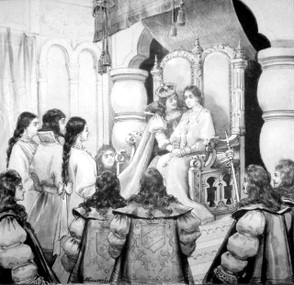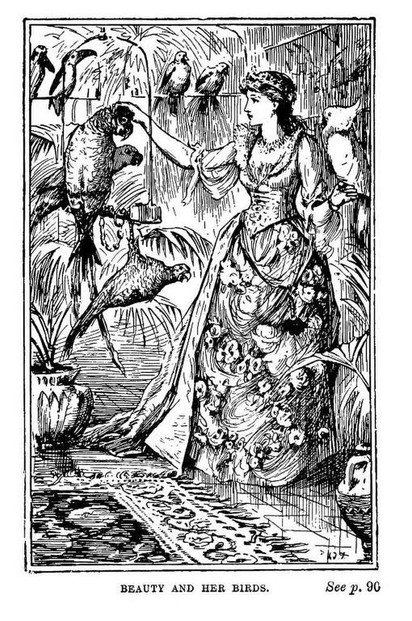Jeanne-Marie Leprince de Beaumont published Beauty and the Beast in 1756 as a part of Magasin des Enfants (Magazine for Young Misses). It was a shortened version of Gabrielle-Suzanne de Villeneuve's fairy tale novella with the same name from 1740. It's also only one of the hundreds of works, signed by Madame Leprince de Beaumont, which established her as one of the most influential teachers in the 18th century.
She had a very intriguing private life as well.
We'll try to explore at least some trivia from her private life too but don't expect too much. Most of her life is intertwined with nobility, spies, and other members of society who invested huge efforts to hide their secrets. So here are 10 facts, or at least educated guesses about Madame Leprince de Beaumont:











 Vintage Postcard Artists with 10 Examples of Easter Cardson 02/21/2025
Vintage Postcard Artists with 10 Examples of Easter Cardson 02/21/2025
 Valentine's Symbolson 01/23/2025
Valentine's Symbolson 01/23/2025
 Thanksgiving Symbolson 11/12/2024
Thanksgiving Symbolson 11/12/2024
 Famous Witches in Literary Historyon 10/06/2024
Famous Witches in Literary Historyon 10/06/2024



Can you add an additional fact about Mme Leprince de Beaumont?
Sorry, I have no information about Madame Le Prince de Beaumont's younger sister.
The first fact/educated guess, Education, contains a reference to a younger sister who accompanied Jeanne-Marie to the convent.
Do we know anything else about that younger sister?
I don't know about her father, but being a goldsmith was definitely a job for a noble man. Yes, you could earn solid money but high society would never accept you. And there was always a problem with licence - you culd be the gest goldsmith in the world but without a licence you could not work and even if you had one, it could be denied at any moment. Similar problem had H. C. Andersen's father, who was a shomaker with only limited licence.
The first fact/educated guess about her education establishes the subsequent Jeanne-Marie as the daughter of someone who worked with gold.
Might that not be somewhat of elite knowledge and skill to do so?
That paragraph nevertheless indicates that business was not good. Is it known what happened to Jeanne-Marie's father personally and professionally?
I don't look at that as a need, more as an adaptation to different audience.
It always interests me when the inspiration or the source is known for art, literature and music.
In terms of Gabrielle-Suzanne de Villeneuve's Beauty and the Beast from 1740, is it that the novella needed updating 16 years later?
Thank you, Veronica. You are very kind.
your traditional tales knowledge is outstanding …..and a pleasure to read
Tolovaj, Thank you for the additional clarifications. This is a most welcome follow-up to Beauty and the Beast, which I've read, along with all your other posts. I tend not to leave comments -- although I always vote -- when I read them quite a bit after they've been created.
Hi, DerdriuMarriner, it's alwys a pleasure to see your insightful comments. No, I don't known why she changed her name, but it is very likely related to her entrance into the convent, where such name changes are very common. Using the name of her father can be party to keep it in the memory, but I don't think the length of his life has anything with it.
About her marriage(s) ... It's very unclear. She definitely used the surname of her 'second' husband, yet it seems, according to the letters (her letters) found by historians, she stayed married to the dancer right to the end of her life. Anyway, her daughter used the name of Mr. de Beaumont, just like Mme Leprince de Beaumont, what is pretty logical, because it was very respectable name which helped to open numerous doors - very helpful for everybody, especially for a woman who wanted to created any kind of business. And it worked pretty well for her, right?